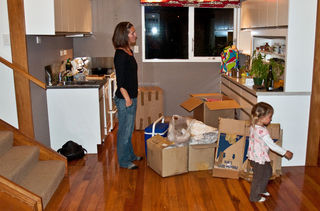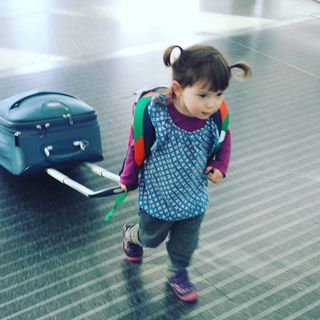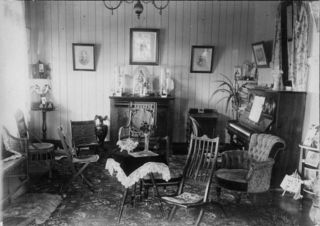When reflecting on our lives, many of us strive to put our memories in order. Doing so, however, is neither straightforward nor certain. Unless a memory contains a mental image of a calendar, the exact date is not directly represented in memory. Of course, we know our third birthday party occurred when we turned three, but unless we have a memory image of three candles on a cake, we need more information.
What information in memory specifies our age – especially during childhood events? How do we date our memories and how do we place these memories along a developmental timeline?
With most memories, we draw on multiple sources of information in memory to determine our age.
Location, Location, Location
The most prominent type of information for dating memories is location. We cite a house or an apartment we were living in at the time, in relation to other places we’ve lived. Sometimes we cite a town or city. Location or setting is in nearly all our personal memories, so it's readily available for dating our memories. If we've lived in different places, location specifies time. We group our memories geographically, and then chronologically, which is an accurate way to approximate time frames.

One implication is that people who moved during childhood can more easily and more accurately date their early memories. People who lived in only one place need other information to date their early memories.
Remembered Capabilities
The next most prominent type of information for specifying our age involves the remembered capabilities or behaviors of ourselves or others. For example, we might remember an event occurring while we were still sleeping in a crib or when we were still using a car seat or after we started wearing glasses. Or we may reference the capabilities of others – an older cousin being able to drive a car or our younger brother being able to talk.
Personal Landmarks
We also remember singular, landmark events that occurred in our lives – breaking an arm, being in a car accident, the birth of a younger sibling, the day one of our parents moved out of the house. These landmarks also include firsts, such as the first day of Kindergarten or our first sleepover. We know when the landmark event happened because we've learned its date independent of our memory for the actual experience. This is also true for national events that affect our lives.

Events in Relation to Landmarks
We also date memories by comparing them in time to personal landmarks, placing them before or after these landmark events. We remember if we hadn’t started school yet or if our younger sister wasn’t born yet or if our father was still alive or if the event was before or after a serious car accident.
Dated Events
Some events may have well-known dates, in particular birthdays and holidays, such as Christmas, Halloween, or the Fourth of July. We then attach these dates to the remembered experiences of these events.
Time-Framed Experiences
We also date memories by referencing a time-framed, extended experience in our lives. We place the remembered event within this time frame, or at the beginning, or at the end. We remember, for example, that the event occurred during the year we were taking violin lessons or the event occurred just after we stopped sucking our thumb.
Sometimes, vivid perceptual images in memory specify our age because the perceptual information existed only in a well-defined time frame – a parquet floor in our play room, a missing front tooth, a bedroom with light-green walls decorated with yellow flowers.
External Memory
A categorically different type of information is external memory: photographs and videos, Google and social media, asking our parents what they remember. Most of the time, the initial dating of memories is done with internal memory, and then verified with external sources.
Strategies
We also use strategies that combine different kinds of information in memory. One prominent strategy is to bracket a remembered event between two unrelated events with known time frames – for example, before our fourth birthday but after we moved to a new house. Another strategy involves establishing a general time frame – often using location – and then systematically narrowing this time frame with other remembered information. Another strategy is simply to add different sources of information to home in on the date of the event.

Past Lives?
We can make mistakes, of course, but most of our age judgments are accurate, even if they are approximate.
One rare but dramatic phenomenon is the remembering of past lives, dating our memories before we were born. Although we can account for this in different ways, there is a straightforward memory explanation.
Personal memory involves vivid images, compelling emotions, and the knowledge of having lived through the remembered event. This last quality of knowing we participated in the remembered event is necessary, but difficult to characterize. It’s not an image. It’s not an inference. It’s a feeling of knowing. And sometimes this knowing is tenuous, especially with very early memories. It’s possible, then, that people who remember past lives may recall images of events from second-hand sources or from dreams, and then incorrectly integrate a sense of having lived through these events. This rare experience is informative and should be explained, but it does not argue against the accuracy of most efforts to date our memories.
Remembering When
In general, we organize events in our lives in geographically-based clusters – and then access other information to make finer temporal distinctions within a cluster. By making use of remembered capabilities, landmark events, time-framed experiences, and specific images about our surroundings, we can accurately narrow down the dates of memories. If internal memory does not provide enough information, we seek external memory. In this way, we are able to work with our memories to construct a specific time line for the important events of our lives.




